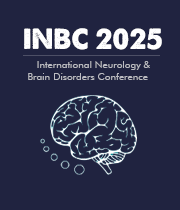Title : Towards a developmental theory of oscillatory transitions: From theta to beta in subcortico-frontal loops through the lens of ADHD
Abstract:
Brain oscillations evolve dynamically throughout childhood as part of neurodevelopmental maturation. Among these, the transition from dominant theta activity (4–8 Hz) to beta rhythms (12–20 Hz) in frontal and subcortical circuits reflects an increasing demand for cognitive control, attention, and behavioral regulation. These changes are hypothesized to result from coordinated structural maturation (myelination, synaptic pruning) and genetic programming, modulated by environmental factors.
This presentation proposes a theoretical framework describing how oscillatory transitions, particularly within subcortico-frontal loops, underpin the development of self-regulatory abilities. ADHD is used as a clinical model, conceptualized as a disruption in this oscillatory progression. The theory integrates findings from developmental EEG studies, genetic markers (e.g., BDNF, DRD4, COMT), and neuroplasticity mechanisms, alongside outcomes from clinical neurofeedback protocols targeting beta1 enhancement and theta suppression in Cz.
In a series of children with ADHD undergoing a 24-session neurofeedback protocol, we observed normalization of theta/beta ratios, improved cognitive test performance, and enhanced adaptive behavior. These findings support the notion that oscillatory modulation may help restore developmental trajectories.
This work bridges neurodevelopment, oscillatory dynamics, and clinical intervention, positioning ADHD as a prototypical model of oscillatory dysregulation and opening new therapeutic perspectives.



